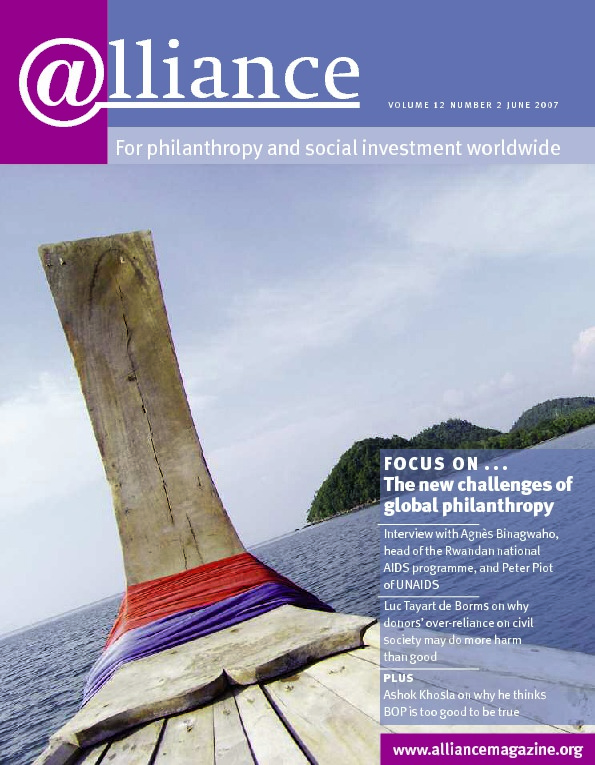Mission investing in the US in recent years has been expanding rapidly with an annual growth rate of 16.2 per cent in the last five years, compared to 2.9 per cent during the preceding 32 years. The number of foundations engaging in mission investing has doubled, and the new funds invested annually have tripled. Mission investments are also diversifying. Once largely restricted to low-interest loans, they now span a spectrum of 18 different debt and equity asset classes.
These are some of the main findings of the first comprehensive study of social investment by US foundations, carried out by FSG Social Impact Advisors and recently released. Funded by a grant from the David and Lucile Packard Foundation, FSG studied the practices of 92 US foundations with $2.3 billion in social investments.
Broadly defined, social investing is the practice of taking social and environmental factors into consideration in making investment decisions. FSG’s report focused on proactive investments that further a foundation’s mission or ‘mission investments’.
Until recently, four large foundations (Ford, Packard, MacArthur, and one anonymous foundation) accounted for most US mission investment activity, primarily through Program Related Investments, a designation of the US Tax Code that permits foundations to claim the investment as part of their grant payout requirement.
The strongest growth, however, has been among smaller foundations. In 2005, smaller foundations accounted for 44 per cent of all new mission investment dollars, representing an annual growth rate of 29 per cent over the past five years, compared to a 13 per cent growth rate for the most active four foundations. The fastest growth in participation has been among foundations with assets under $200 million.
Although foundations have historically concentrated their mission investments in low-interest loans to non-profit organizations, they are increasingly using more innovative equity investments such as venture capital and aiming for market-rate returns. In 2005, 11 per cent of mission investments had market-rate expected financial returns, and over the past five years this segment has grown three times as rapidly as below-market-rate investments. Here, too, smaller foundations are leading the way.
It also seems that the risk of mission investing is less than many foundations expected. Of the foundations that made loans over the past 40 years, 75 per cent achieved a zero default rate. At the other extreme, three foundations had cumulative default rates in excess of 30 per cent, suggesting that they managed their portfolios differently from the rest. Excluding these three foundations, the overall full repayment rate was 96 per cent.
Most mission investment portfolios are managed primarily by programme staff, often without the assistance of financial officers. Roughly 11 per cent use outside consultants to structure or manage their mission investments. Very few foundations, however, have developed internal processes and controls for managing mission investments on a consistent and reliable basis.
Despite the increase in activity, mission investing still represents a minuscule segment of annual grantmaking activity – certainly less than 1 per cent – and an even smaller proportion, around 0.025 per cent, of the $500 billion held in foundation assets.
Our research disclosed that a lack of knowledge, communication and opportunity is restricting further growth. The continued expansion of mission investing will require:
· greater understanding of and proficiency in mission investing among foundation staff and boards;
· a more robust marketplace for mission investments, including direct investment opportunities, mission investment intermediaries, and suitably qualified consultants;
· improved mission investment performance measurement, record keeping, and information sharing.
For more information
Both an executive summary and the full 54-page report are available for free download at http://www.fsg-impact.org
Mark Kramer is Managing Director, FSG Social Impact Advisors. Email Mark.Kramer@fsg-impact.org






Comments (0)